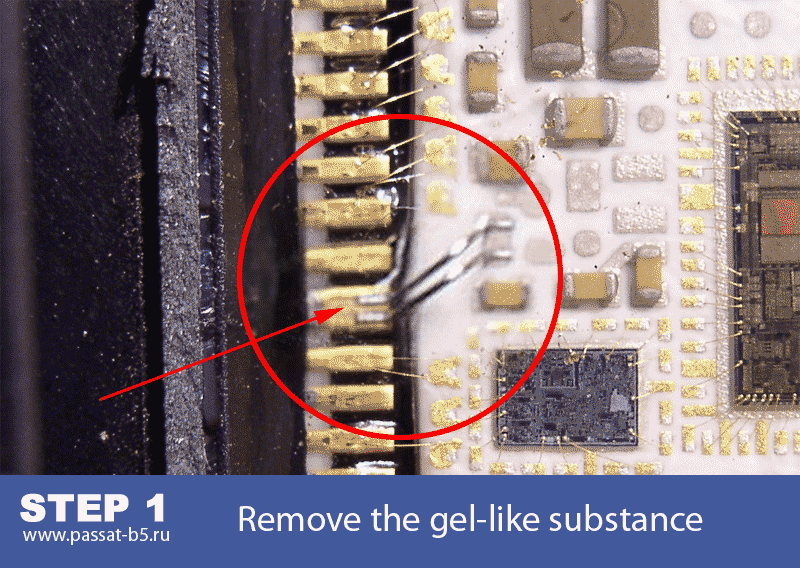Bluebee, you may want to add to your outstanding one-stop ABS thread!
After getting my module issues all sorted out, my realtor has a 2000 528 iaT that has the "three lights of death" being ABS,DSC, Brake lights on. I have eliminated the sensors with diode test and he has given me permission to attempt surgery before just ordering him a new module for $480 plus coding. I have the module all dremel-led open neatly and discovered what I thought would be dielectric grease is more likely a snot-like (sorry) condensation preventive "goo" all over the surface-mounted components. It is soft and could be likely wiped away or the area to be re-soldered could be cleared mostly of the clear goo and the connections remelted (I imagine the heat of the solder pencil which I can control down to the degree will sizzle the remaining goo away). I would guess by messing with the stuff a little that rubbing alcohol would likely even make it go away. It looks very mild, but always better to ask and then others see the answer as well. I planned to just move the goo away from the solder points that need renewing and then hoped the heat from the pencil will melt the remaining away...re-do connections and then pull some excess back over the contacts. I believe it is not dielectric grease to dissipate heat, but rather a moisture preventer that keeps any moisture that could form inside the case from getting on the board, causing corrosion or a path of reduced resistance between points that are already very close. I also think a plain, white or clear dielectric grease could be put there after the repair as well instead of Bosch technician snot! I will advise how the repair works. I think the patient has a chance for complete recovery as his issue resets itself every night when the wagon cools and then re-lights the codes after about 10 minutes of driving. Very symptomatic of very common heat-affected solder joints.
Bill
After getting my module issues all sorted out, my realtor has a 2000 528 iaT that has the "three lights of death" being ABS,DSC, Brake lights on. I have eliminated the sensors with diode test and he has given me permission to attempt surgery before just ordering him a new module for $480 plus coding. I have the module all dremel-led open neatly and discovered what I thought would be dielectric grease is more likely a snot-like (sorry) condensation preventive "goo" all over the surface-mounted components. It is soft and could be likely wiped away or the area to be re-soldered could be cleared mostly of the clear goo and the connections remelted (I imagine the heat of the solder pencil which I can control down to the degree will sizzle the remaining goo away). I would guess by messing with the stuff a little that rubbing alcohol would likely even make it go away. It looks very mild, but always better to ask and then others see the answer as well. I planned to just move the goo away from the solder points that need renewing and then hoped the heat from the pencil will melt the remaining away...re-do connections and then pull some excess back over the contacts. I believe it is not dielectric grease to dissipate heat, but rather a moisture preventer that keeps any moisture that could form inside the case from getting on the board, causing corrosion or a path of reduced resistance between points that are already very close. I also think a plain, white or clear dielectric grease could be put there after the repair as well instead of Bosch technician snot! I will advise how the repair works. I think the patient has a chance for complete recovery as his issue resets itself every night when the wagon cools and then re-lights the codes after about 10 minutes of driving. Very symptomatic of very common heat-affected solder joints.
Bill











































